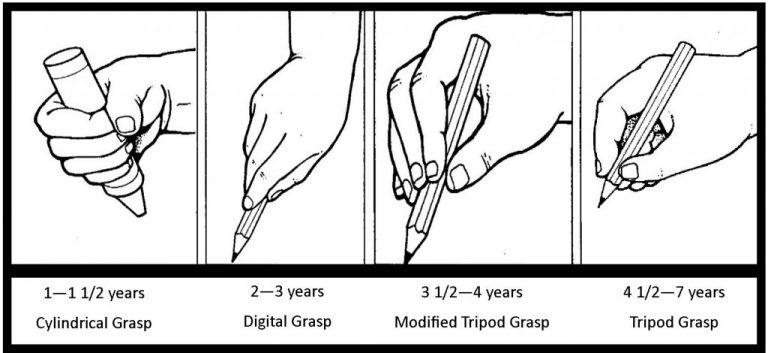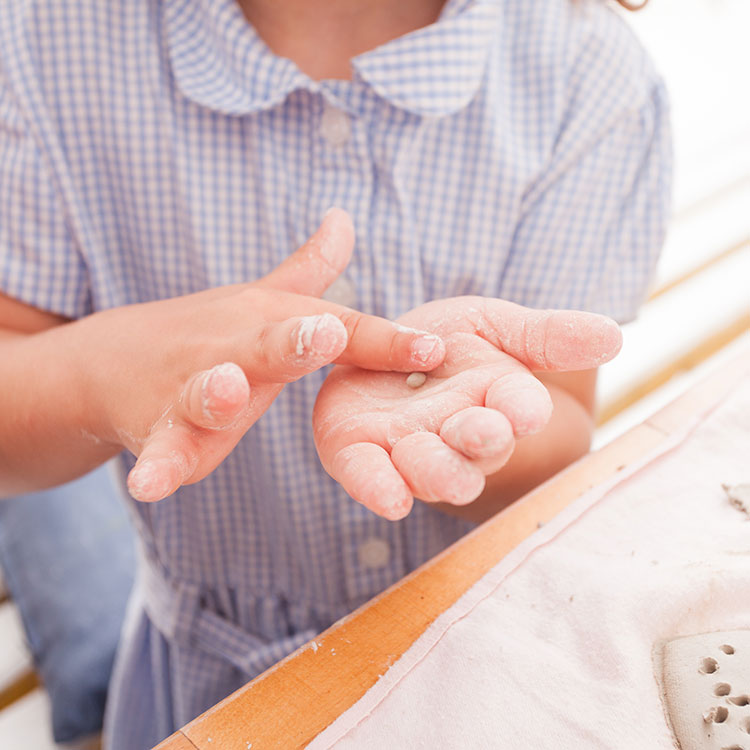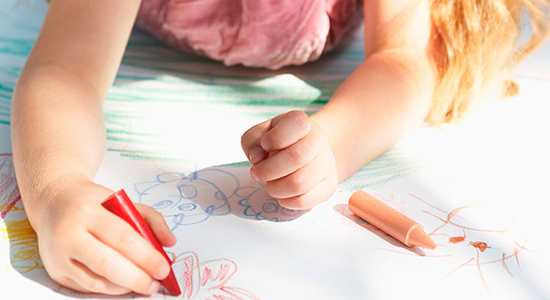Pre-writing skills are essential for children to be able to develop the ability to hold and move a pencil fluently and effectively and therefore produce legible writing. Developing fine motor skills and strengthening muscle control can be done through various play experiences, not just writing and drawing. Some examples to promote participation in fine motor experiences and further expand this area of physical development can be found below. We often refer to these as ‘finger gym activities’.
Writing Readiness (Pre-Writing) Skills
Pre-writing skills are the fundamental skills children need to develop before they are able to write. These skills contribute to the child’s ability to hold and use a pencil, and the ability to draw, write, copy, and colour. A major component of pre-writing skills are the pre-writing shapes. These are the pencil strokes that most letters, numbers and early drawings are comprised of. They are typically mastered in sequential order, and to an age specific level. These strokes include the following strokes: |, —, O, +, /, square, , X, and Δ.
Why are writing readiness (pre-writing) skills important?
When pre-writing skills are underdeveloped it can lead to frustration and resistance due to the child not being able to produce legible writing or to ‘keep up’ in class due to fatigue. This can then result in poor self-esteem and academic performance.

What are the building blocks necessary to develop writing readiness (pre-writing)?
- Hand and finger strength: An ability to exert force against resistance using the hands and fingers that allows the necessary muscle power for controlled movement of the pencil.
- Crossing the mid-line: The ability to cross the imaginary line running from a person’s nose to pelvis that divides the body into left and right sides.
- Pencil grasp: The efficiency of how the pencil is held, allowing age appropriate pencil movement generation.
- Hand eye coordination: The ability to process information received from the eyes to control, guide and direct the hands in the performance of a task such as handwriting.
- Bilateral integration: Using two hands together with one hand leading (e.g. holding and moving the pencil with the dominant hand while the other hand helps by holding the writing paper).
- Upper body strength: The strength and stability provided by the shoulder to allow controlled hand movement for good pencil control.
- Object manipulation: The ability to skilfully manipulate tools (including holding and moving pencils and scissors) and controlled use of everyday tools (such as a toothbrush, hairbrush, cutlery).
- Visual perception: The brain’s ability to interpret and make sense of visual images seen by the eyes, such as letters and numbers.
- Hand dominance: The consistent use of one (usually the same) hand for task performance, which allows refined skills to develop.
- Hand division: Using just the thumb, index and middle finger for manipulation, leaving the fourth and little finger tucked into the palm stabilizing the other fingers but not participating

Fine Motor Skills
What are Fine Motor skills?
Fine motor skills involve the use of the smaller muscle of the hands, commonly in activities like using pencils, scissors, construction with lego or duplo, doing up buttons and opening lunch boxes.
Fine motor skill efficiency significantly influences the quality of the task outcome as well as the speed of task performance. Efficient fine motor skills require a number of independent skills to work together to appropriately manipulate the object or perform the task.
What skills do ‘fine motor skills’ include?
Academic skills including:
- Pencil skills (scribbling, colouring, drawing, writing)
- Scissors skills (cutting)
Play
- Construction skills using lego, duplo, puzzles, train tracks
- Manipulating playdoh/clay
- Doll dressing and manipulation
- IT use (e.g. mouse and stylus manipulation)
Self-care including
- Dressing – tying shoelaces, doing up sandals, zips, buttons, belts
- Eating – using cutlery, opening lunch boxes and food bags
- Hygiene – cleaning teeth, brushing hair, toileting.
Note: Visual perception (accurately using vision, ‘seeing’ and interpreting) is not strictly a fine motor skill but directly supports fine motor skill performance.

Why are fine motor skills important?
Fine motor skills are essential for performing everyday skills as outlined above as well academic skills. Without the ability to complete these everyday tasks, a child’s self-esteem can suffer, their academic performance is compromised and their play options are very limited. They are also unable to develop appropriate independence in ‘life’ skills (such as getting dressed and feeding themselves) which in turn has social implications not only within the family but also within peer relationships.
How can you tell if a child has fine motor skill difficulties at a glance?
- Avoidance and/or disinterest of fiddly finger skills (and the tasks listed above)
- Preferring physical activity (again to avoid sit down tasks)
- Dominant interest in ‘passive’ activities such as IT (e.g. watching TV or an IPAD that don’t require Fine Motor skills)
- No interest in pencil or scissors skills
- Asking others to “draw a cat for me”
- Not persisting in the face of a challenge (e.g. asking parents to fix a problem without physically trying to fix it themselves)
- Limited confidence when attempting self-help skills such as dressing themselves, brushing their teeth etc.
Reference: https://childdevelopment.com.au






